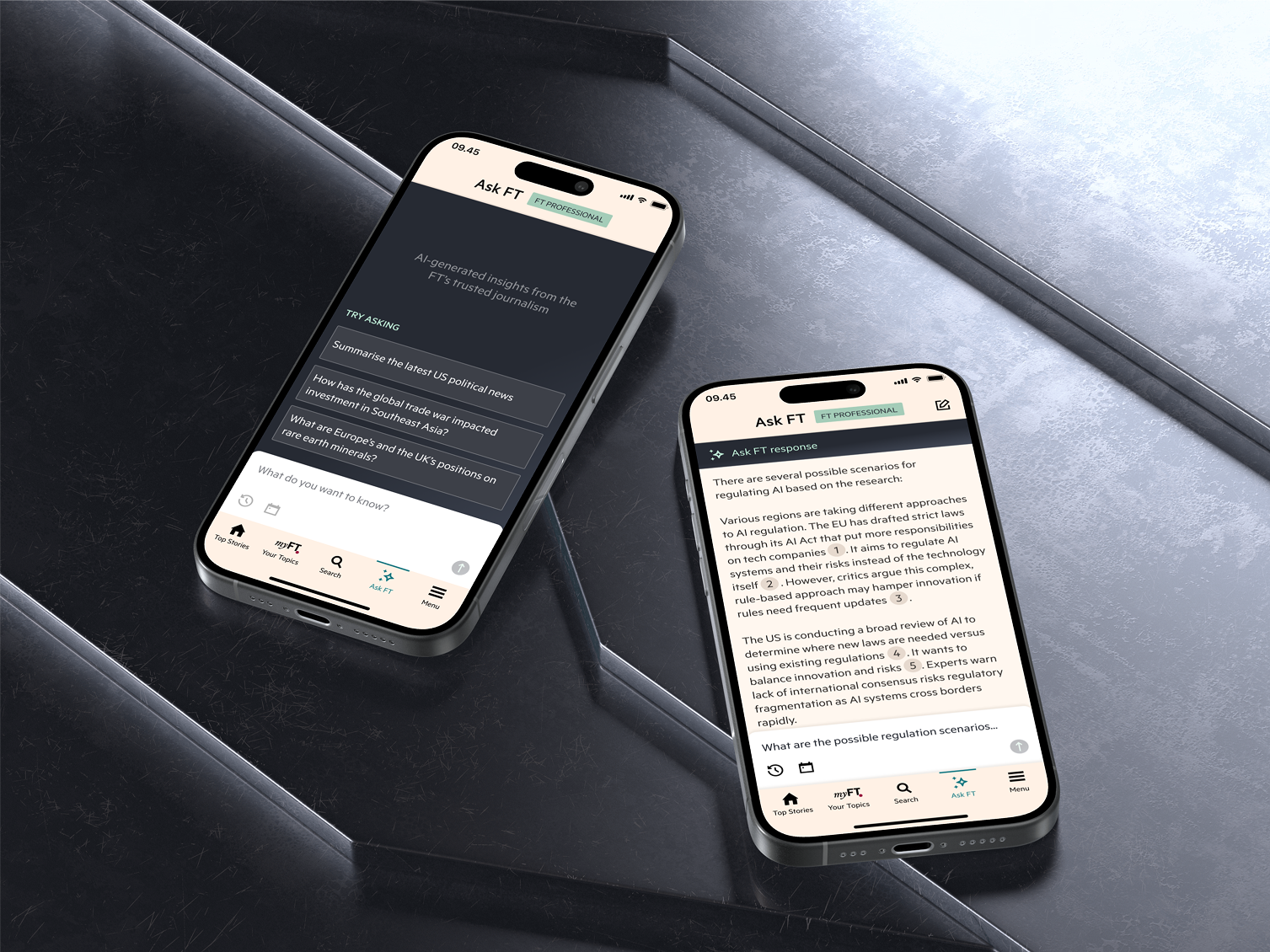Ask FT (case study coming soon)

Overview
Ask FT is the Financial Times’ first generative AI feature, designed to help our 1.8 million FT Professional (B2B) subscribers get ahead in their working lives by providing trustworthy, timely answers to their questions.
Initially launched on FT.com, Ask FT saw limited return rates despite strong initial interest. With the majority of FT readers engaging through the iOS and Android apps, expanding Ask FT beyond the web became essential to meet users where they are.
When I joined the project, an initial design direction had already been established. However, user feedback and internal reviews revealed several usability, platform-specific and technical issues. My role was to step in, assess the existing designs, and lead the product toward a more cohesive, user-centered and platform-appropriate experience, while ensuring timely delivery amid high expectations from senior stakeholders.
This project required close collaboration across multiple disciplines, including Data Science, App, FT Professional (B2B) Commercial, Product and Tech teams.
My role
I joined the project during a critical redesign phase, after the initial launch on web. My primary responsibility was to elevate and adapt the Ask FT experience for mobile platforms while ensuring visual and functional consistency across the FT ecosystem.
My key contributions included:
- Auditing and diagnosing usability and platform-specific issues in the initial web and app designs
- Redesigning user flows and UI components to align with FT’s design standards and improve clarity, accessibility, and overall user experience
- Collaborating closely with cross-functional teams to ensure technical feasibility and smooth implementation within tight delivery timelines
- Prototyping and testing design iterations to validate usability and ensure the experience felt native to both iOS and Android
- Aligning design decisions with product goals, balancing user needs with stakeholder expectations
Through this role, I acted as both a problem-solver and design advocate, ensuring the final product delivered on its strategic intent while maintaining the quality and integrity expected of the FT brand.
Problem
When I joined the project, the initial app designs for Ask FT had already been developed, but internal reviews and testing revealed that the experience lacked polish and coherence across platforms. The early direction blended web and mobile conventions, leading to an interface that felt inconsistent and unintuitive.
Given that the FT app operates within a largely hybrid (web wrapper) environment, the challenge was to make Ask FT feel native and intuitive without overcomplicating technical delivery. At the same time, engineering teams were struggling with incomplete design flows and limited QA support, which slowed progress and increased the risk of inconsistency.
My focus was to re-evaluate the experience holistically — refining and unifying the visual design, clarifying interaction patterns, and creating a more scalable design framework. This required balancing usability, technical feasibility, and brand integrity, while working closely with Product, Engineering, and Data Science to ensure a high-quality and timely release.
The results were rocket-ish
After launch, the client was thrilled with the result—a website that not only met but exceeded their expectations. It successfully showcased their offerings in a way that resonated with their target audience while providing the tools they needed to keep the platform updated and relevant. The feedback from their customers was overwhelmingly positive, with many praising the sleek design and ease of navigation.
This project was a perfect example of how thoughtful design and meticulous development can come together to create something truly impactful. It remains a highlight in my portfolio, showcasing the power of blending creativity, strategy, and technology to deliver results.


